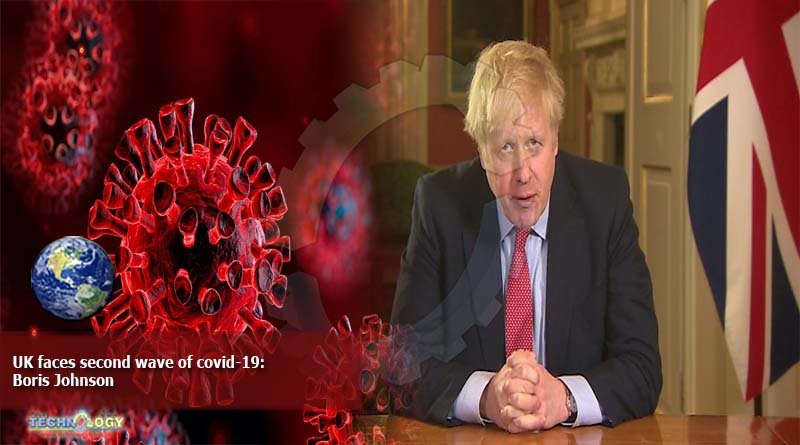Mr Boris Johnson said he did not “want to go into bigger lockdown measures” but that tighter social distancing rules might be necessary. It is understood a new three-tiered set of restrictions is being considered. The plan would aim to avoid a national lockdown but could stop household-to-household contact.

The first tier would be the level of measures currently in place in most parts of England now – with social distancing the key aspect.
The second tier would involve what is currently being imposed in north-east of England – curfews on hospitality venues and a ban on meetings between households.
The final third tier would involve stricter lockdown measures.
If this plan is put into action, “Tier two” restrictions are expected to be imposed on a region-by-region basis, but it is thought likely that they could eventually cover almost all of the UK.
London Mayor Sadiq Khan said it was “increasingly likely” that the nine million people in the capital will need to follow areas such as the north-east of England and come under additional measures.
An account of a meeting at which the three-tier measures were discussed has been shared with the BBC. It explained the government’s shielding policy was also “being actively reviewed” and a decision could come soon on further measures to protect the vulnerable.
Any further shielding decisions are expected to take a much more tailored approach than before.
With the virus expected to be more severe over the winter, officials are looking at bringing in measures that could last until the spring.
It comes as the UK has recorded another 4,322 confirmed Covid-19 cases.
Public Health England’s medical director Yvonne Doyle warned of “far worse things to come” as the UK recorded widespread growth of the virus across the country.
“Clearly when you look at what is happening, you’ve got to wonder whether we need to go further than the rule of six that we brought in,” the prime minister said, referring to measures introduced on Monday.
He added that “the British people have done an amazing job – they’ve brought that peak down by discipline” but that “people find it difficult to keep this up, it’s difficult to maintain that discipline for a long time”.
Speaking in Oxfordshire, Mr Johnson said the government would keep “everything under review” but a second national lockdown was “the last thing anybody wants”.
“We want to keep schools open,” he said. “We want to keep the economy open as far as we possibly can, we want to keep businesses going.”
Mr Johnson added: “The only way we can do that is, obviously, if people follow the guidance.”
The question is no longer where we are, but where we are heading.
Yes, the number of people infected, in hospital with Covid or dying from the disease are all at far lower levels than at the peak.
Scientists will quibble about the exact definition of a “second wave”, but all data points to rising numbers of infections.
The government’s science advisers say the number is now doubling every week.
If those trends continue then infections could go from the estimated 6,000-a-day to more than 100,000 by mid-October.
It is that trajectory, which is not written in stone, the government is trying to change.
There are questions for politicians, from whether it should do a “circuit-break” to improving Test and Trace.
The government has also been considering what it called a “circuit-break” approach, which could involve re-introducing restrictions in public spaces for a period of a few weeks to suppress the spread of the virus. Schools and workplaces would stay open.
Ideas suggested by the government’s Scientific Advisory Group for Emergencies (Sage) included closing some parts of the hospitality sector.
Millions of Britons are now living under stricter coronavirus measures, with London Mayor Sadiq Khan saying the capital should not wait “for this virus to again spiral out of control before taking action”.
New measures to curb the spread of the virus have been introduced across parts of the North West, Midlands and West Yorkshire.
This includes Lancashire (excluding Blackpool), Merseyside and the Cheshire boroughs of Warrington and Halton.
Additional restrictions are also being put in place in Wolverhampton, Oadby and Wigston in Leicestershire, and all parts of Bradford, Kirklees and Calderdale.
Some areas of West Yorkshire had already been subject to restrictions implemented at the start of August but they were eased. They are now subject to these new rules.
In total, nearly 4.7 million people will be affected by the new restrictions, which ban separate households from meeting each other at home or in private gardens.
In other developments:
A rapid test can accurately diagnose a coronavirus infection within 90 minutes without needing a specialist laboratory, scientists say
Personal protective equipment will be free for care homes until next March, as part of a government coronavirus plan for NHS England this winter
The R number, which measures how quickly the virus is spreading, has risen to between 1.1 and 1.4 from between 1.0 and 1.2 last week, the government said. It means on average 10 infected people will infect between 11 and 14 people, so the epidemic is growing
British retail sales have continued to increase for the fourth consecutive month, boosted by spending on household goods and DIY, according to official figures
London’s New Year’s Eve firework display will not be taking place this year, Mayor of London Sadiq Khan told LBC
Northern Ireland’s health minister has described three Van Morrison songs protesting against coronavirus lockdowns as “dangerous”
Originally published by BBC
